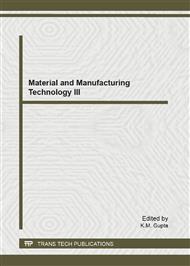[1]
Christophe Yrieix, Alina Dulaurent, Caroline Laffargue, et al. Characterization of VOC and formaldehyde emissions from a wood based panel: Results from an inter-laboratory comparison. Chemosphere 79 (2010) 414–419.
DOI: 10.1016/j.chemosphere.2010.01.062
Google Scholar
[2]
F. Bulian, R. Battaglia, S. Ciroi. Formaldehyde emission from wood based panels: The importance of intercalibrating the test methods. Holz als Roh- und Werkstoff 61 (2003) 213–215.
DOI: 10.1007/s00107-003-0378-5
Google Scholar
[3]
Kim, W.J., Terada, N., Nomura, T., et al. Effect of formaldehyde on the expression of adhesion molecules in nasal microvascular endothelial cells: the role of formaldehyde in the pathogenesis of sick building syndrome. Clinical and Experimental Allergy 32 (2), 287–295.
DOI: 10.1046/j.1365-2222.2002.01301.x
Google Scholar
[4]
Little, J.C., Hodgson, A.T., Gadgil, A.J. Modeling emissions of volatile organic compounds from new carpets.Atmospheric Environment 28 (2), 227–234.
DOI: 10.1016/1352-2310(94)90097-3
Google Scholar
[5]
Matthews, T.G., Thompson, C.V., Wilson, D.L., Hawthorne A.R. Air velocities inside domestic environments: an important parameter in the study of indoor air quality and climate. Environment International 15, 545–550.
DOI: 10.1016/0160-4120(89)90074-3
Google Scholar
[6]
Norbäck D. An update on sick building syndrome. Current Opinion in Allergy and Clinical Immunology (2009) 9:55-9.
DOI: 10.1097/aci.0b013e32831f8f08
Google Scholar
[7]
Brightman HS, Milton DK, Wypij D, et al. Evaluating building-related symptoms using the US EPA BASE study results. Indoor Air (2008) 18:335-45.
DOI: 10.1111/j.1600-0668.2008.00557.x
Google Scholar


